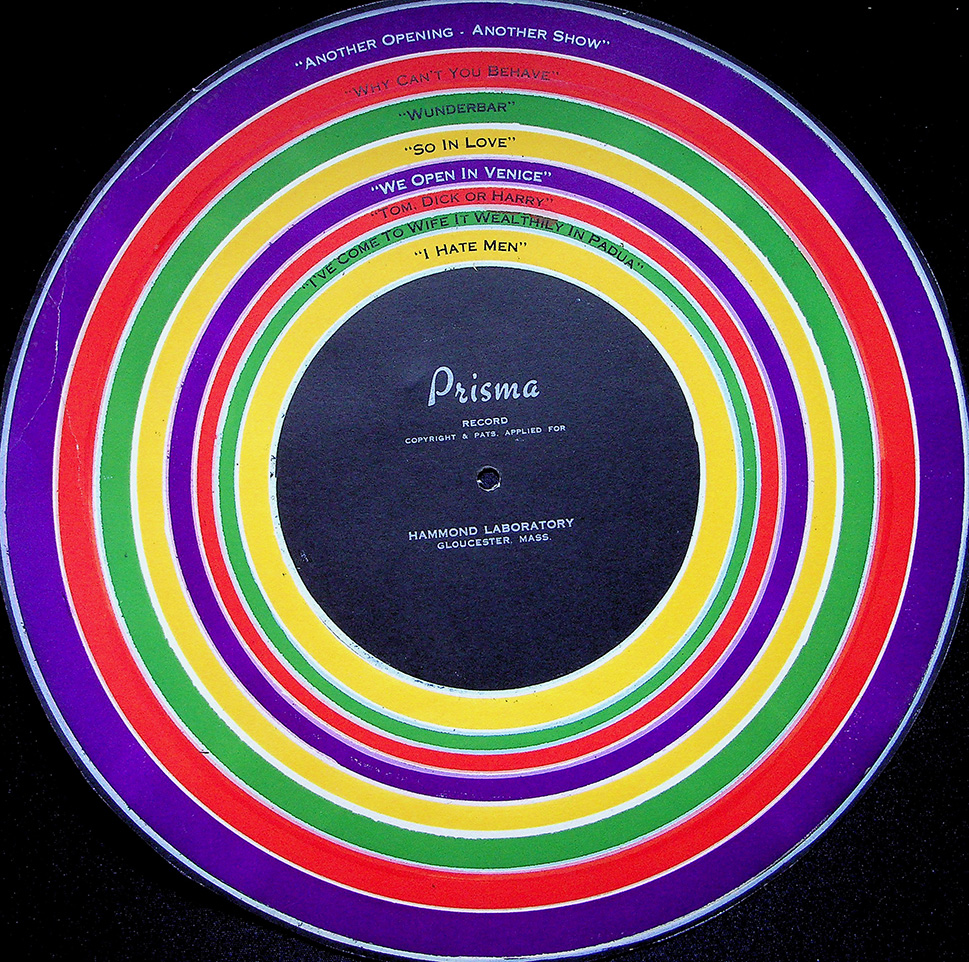A16-inch transcription disc—a rare and short-lived format used by radio stations to accommodate longer recordings before the advent of microgroove records in the mid-1940s.
Open Daily: 9:00 am to 3:30 pm; last entrance is at 2:45 pm.
The Museum and Grounds close promptly at 3:30 pm.
This engaging exhibit showcased highlights from Hammond’s vast vinyl and shellac record collection, including rare and unusual formats, along with interactive and multimedia elements that broke down the science of sound, including the complexities of how audio records were made and how they worked in a simplified and accessible manner for all ages.
A custom-built jukebox, loaded with newly digitized audio samples from the Museum’s archival collection, which had not been publicly shared since Hammond’s lifetime, offered visitors an immersive listening experience.
The exhibition featured hands-on components for everyone, from the youngest visitors to the oldest, offering two vintage-style record player toy sets for little ones to engage with and experience sound reproduction in an age-appropriate and fun way, as well as vintage records for guests to thumb through, offering the tactile experience of musical discovery that defined much of the 20th century.
An aluminum Speak-O-Phone record—a significant advancement in home recording technology. Consumers could step into private sound booths and record their own audio directly onto aluminum discs, which could only be played back using bamboo needles. Our disc holds something truly extraordinary: possibly the first known radio broadcast of electronic music. At the time, Hammond was developing his experimental “Piraphon” piano, a hybrid instrument featuring a speaker system with pickups to amplify the piano’s sound, along with a built-in radio and phonograph for playing along with recorded music.
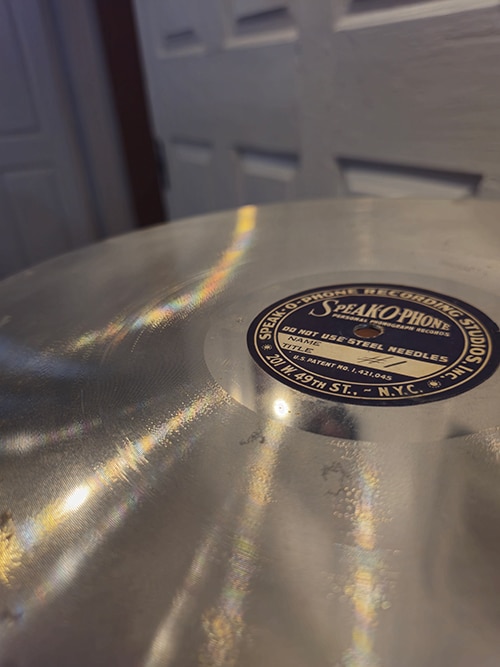
A rare home recording medium, this 6″ record—smaller than the standard 7″—was made from a softer, custom material known as Victrolac. Unfortunately, the audio on this particular disc is indecipherable, as Victrolac was notorious for its poor sound quality.
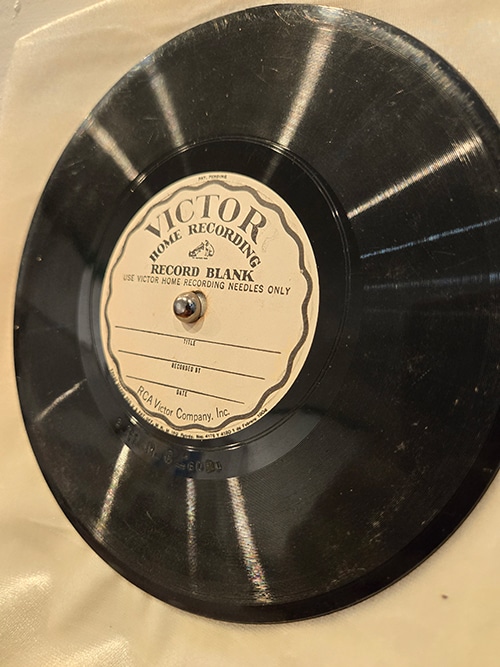
A sleek and striking ‘Red Seal De Luxe’ RCA Victor record from Hammond’s personal collection. Colored shellac and vinyl records began appearing in the mid-1940s, and today, clear vinyl is often less expensive to produce than traditional black records.
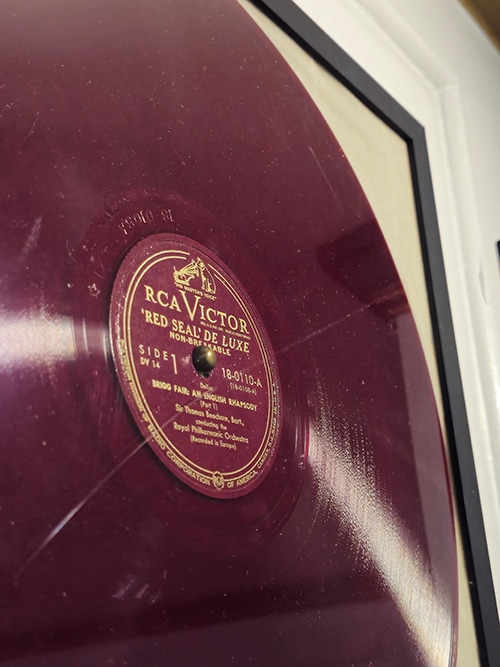
A laser-printed, hands-on model that invites visitors to touch and explore how a needle physically tracks the grooves of a record to reproduce sound. Interactivity is a key feature of this exhibit.
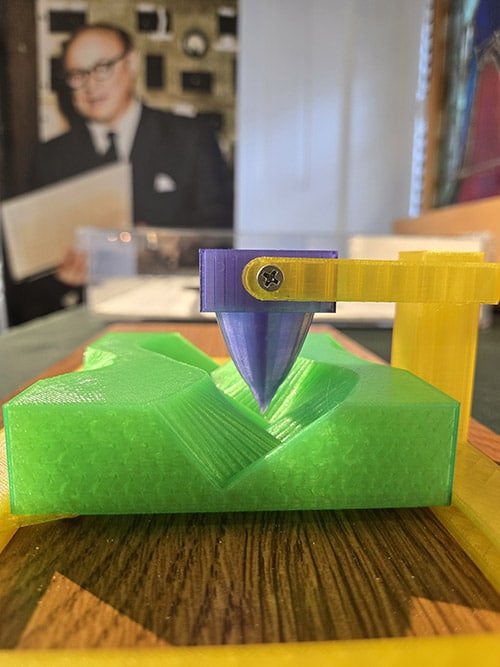
An international recording by Xavier Cugat, the Cuban-born bandleader known for popularizing Spanish and Latin music. Hammond’s collection features a diverse array of global artists, including recordings from Russia, Scandinavia, Persia, Palestine, Greece, Germany, Hawaii, and Africa.
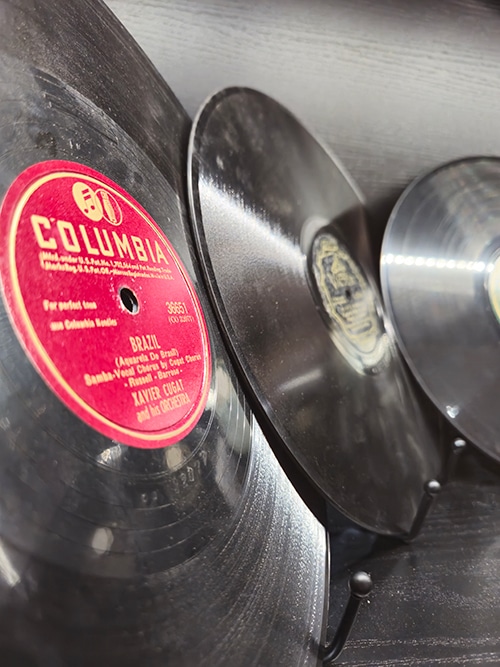
A selection of albums recorded at Hammond Castle over the years by renowned artists including Kenneth Wilson, Richard Ellsasser, and Berj Zamkochian—each showcasing the unique sound of our historic pipe organ.
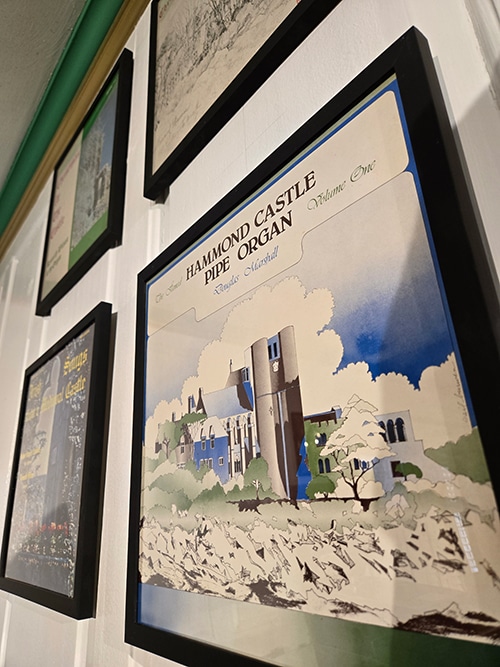
A 1920s-era phonograph playing one of the few commercially produced records recorded inside the castle. Renowned organist Virgil Fox recorded numerous tracks here on our historic organ.
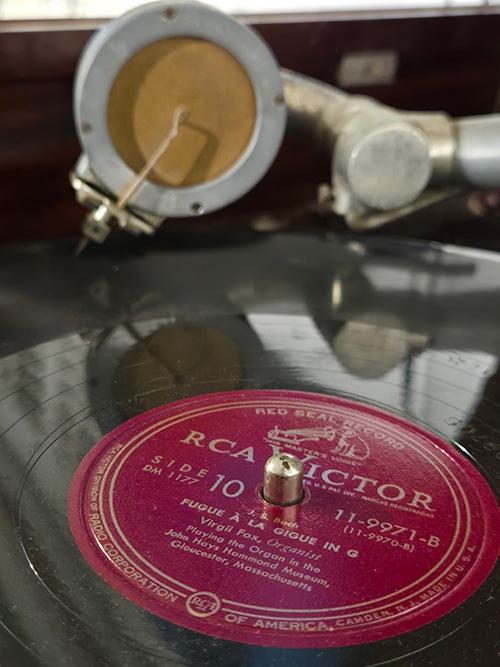
A Fisher-Price record player provides a fun, interactive way for young visitors to explore the difference between analog and digital audio using two toy-based examples. The disc featured here is a recreation of Lazy Man, a song credited to John Hays Hammond Jr.
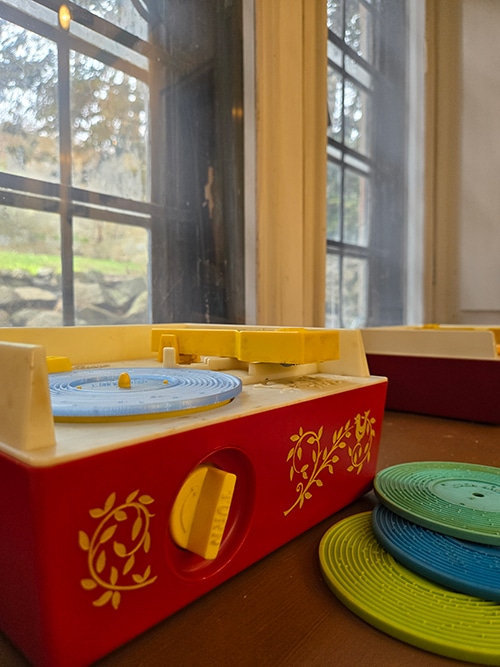
A16-inch transcription disc—a rare and short-lived format used by radio stations to accommodate longer recordings before the advent of microgroove records in the mid-1940s.
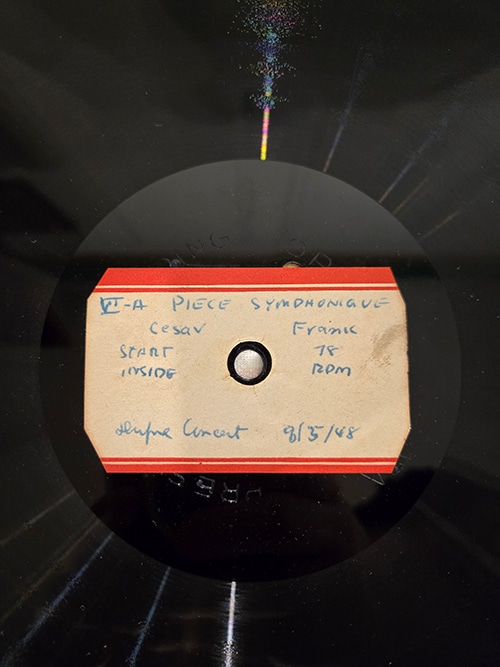
This test record was likely sent to Hammond for previewing or testing the audio quality. Leopold Stokowski, an associate of Hammond, conducted many of the pieces in Hammond’s collection.
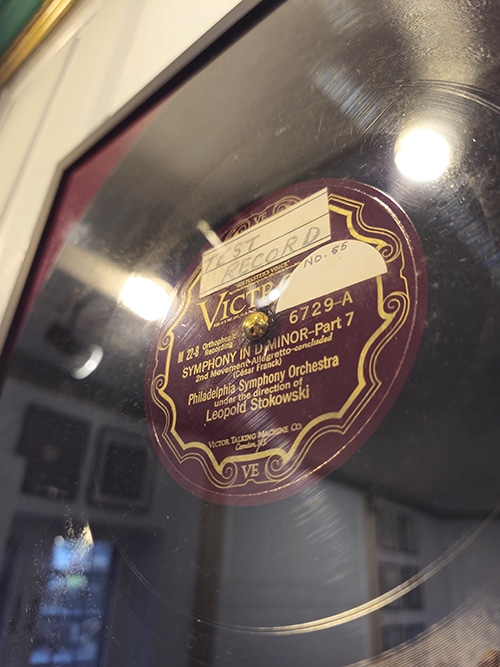
Assistant Curator Donovan Lafontaine gives us a closer look at one of the most unique items in Spinning Platters with Hammond—an aluminum record from Hammond’s private collection
The “Prisma” Record was a rainbow-colored vinyl record designed and patented by John Hays Hammond Jr. in 1948 to solve a particular annoyance with that venerable music medium: the lack of a way to easily select a specific track to listen to on a given album.
